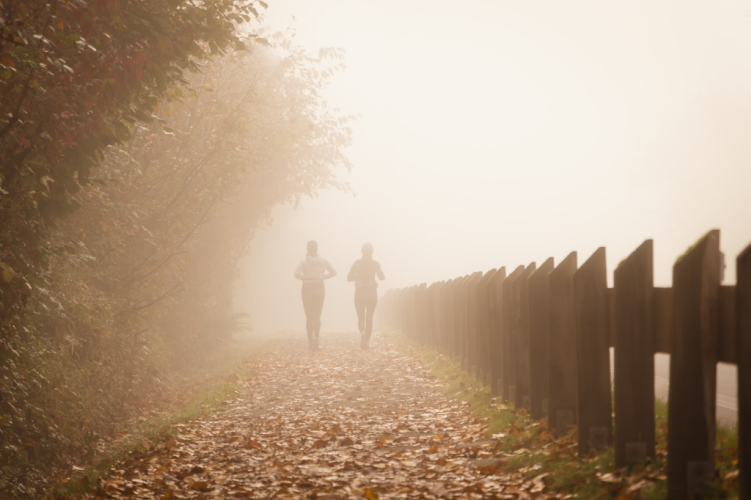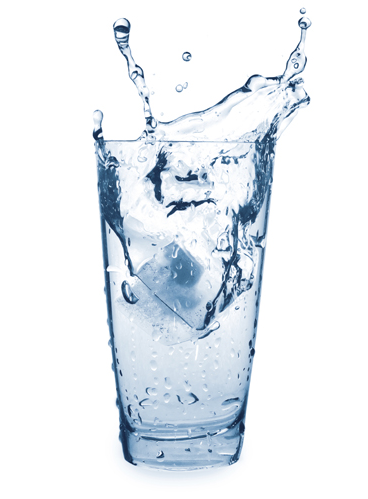Tips for Exercising in the Cold Weather
Nov 30, 2020

As the air outside gets chilly, instead of thinking up excuses to skip workouts, I’m finding ways to optimize my cold weather routine, but it isn’t easy. If you’re like me, as the days get shorter, your resolve to move gets lower.Did you know you can burn up to twice as many calories running in cool weather? Why? Researchers say the body burns additional calories exercising in the cold. It makes sense – when it’s cold out, your body must work harder and exert more energy just trying to keep you warm. In addition, you’ll tend to move faster because it is cold. Research published in Medicine & Science in Sports & Exercise found that race times are faster in colder weather than in warmer temperatures—and quicker runs torch more calories, period.
Same exercise, more benefit? I’m in! Exercising outdoors in the winter (as well as any time of year) also gives you a boost of vitamin D from the sunshine. Most adults fall short in vitamin D, which is important nutrient for optimal bone and heart health. The outdoors gives you a mental boost as well - studies show that the outdoors refreshes your brain! According to researchers at the University of Michigan, simple and brief interactions with nature can produce marked increases in cognitive control.
When winter approaches, use these tips to keep you safe and healthy when exercising outdoors:
 Stay Hydrated
Stay HydratedYou may not feel as thirsty when the weather is cold, so staying hydrated is not as easy. According to mayoclinic.com, dehydration in cold weather can result from an increased urine production as well as the drying power of the winter wind, but it may be harder to notice during cold weather. The Institute of Medicine has a general recommendation of 91 ounces of water daily for women and 125 ounces daily for men, from both beverages (they account for 80% of water intake) and food (more on hydrating foods below).
Just as in the summertime, it’s a good idea to skip the sugar-laden and highly-caffeinated drinks and instead reach for plain water or 100% fruit juice diluted with water. In addition, think of warming drinks such as hot tea, homemade hot chocolate (use non-fat milk with a tablespoon of Ovaltine or unsweetened cocoa powder), or simply hot water with a squeeze of lemon.There are hidden sources of water in foods too – in addition to the obvious fruit and vegetable choices, try oatmeal, yogurt, soups and smoothies to aid with hydration.
Take Cover
When the wind picks up, try walking on tree-lined paths where you are somewhat protected. Here’s a great tip from LiveScience.com: plan ahead in the winter by mapping your exercise through a neighborhood with places that can provide heat and shelter, such as a café, in case you need a break from harsh weather conditions along the way. If the weather is too severe to head outside, you can take your walk inside to a mall, ice rink (walk the top circle) or a big box store, like Target.
Wear the Right Gear
Non-slip shoes and warm clothing are essential. Keep moisture-wicking synthetic material, such as polypropylene, next to your skin. The middle layer should be wool or fleece (not cotton – it stays wet from sweat and can make you feel chilled). The third and outer layer should be breathable and waterproof. Experimenting with different combinations of clothing and layers may be necessary to optimize comfort. Lastly, don’t forget your mother’s words of wisdom and cover your head. Scientists say when temperatures reach 32 degrees F or below, about 50 percent of body heat is lost from your head.
Warm Up Indoors
When it’s cold outside, it’s more important than ever to warm up before you head out. Popsugar recommends five to ten minutes of marching in place, squats, etc. to get you ready. If you skip the warm up, you’re likely to shock your body when you step into the cold, making your muscles feel tighter and making them more prone to injury. Whatever your warm up consists of, make sure you take the time to get the blood flowing to your muscles and your heart rate increasing gradually.
Cool Down Slowly
It’s equally important that you take enough time to cool down after a workout in the cold. Just 3 to 5 minutes of a slower pace will help relax muscles and will begin to return your body temperature to normal. It’s also a good idea to remove sweaty clothes as soon as possible because damp clothing increases heat loss. Plus, those damp clothes will begin to give you a chill as soon as you stop exercising. Take the time to re-dress in warm clothes, and/or take a warm shower after your workout.
This winter, toss aside your qualms about exercising in the cold, and get with the program. Your heart, body and brain will thank you!
Check out these additional resources:
- Cold Weather Tips from Boston.com
- Winter Weather Exercise Tips from Runner’s World
- Facts about Hypothermia
Please note: Check with your doctor before beginning any exercise program and take special precautions if you have underlying health conditions that may be exacerbated in the cold, such as asthma or a heart condition.
.jpg) Author: Kristen Ciuba
Author: Kristen Ciuba
Kristen is a Nutritionist at Diet-to-Go, based in Lorton, VA. She tries to “practice what she preaches” by fitting in healthy foods and cooking, challenging exercise, and quality time with family and friends every day!









